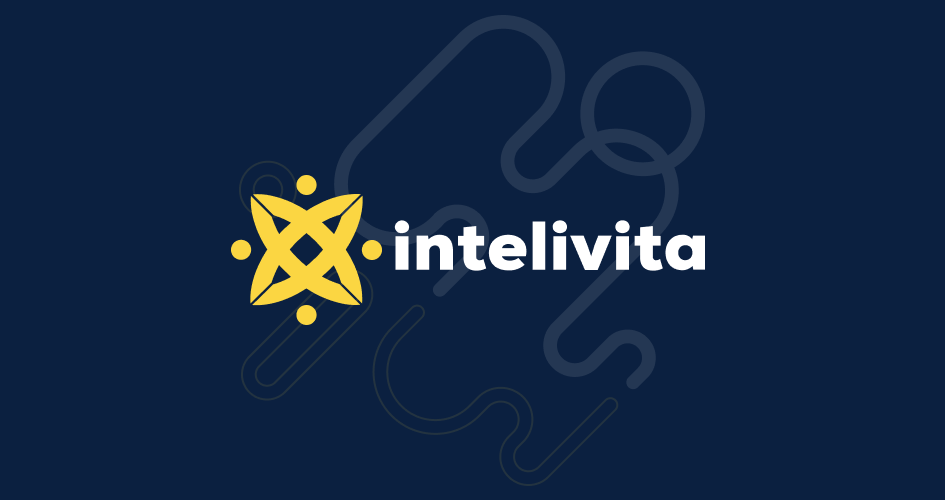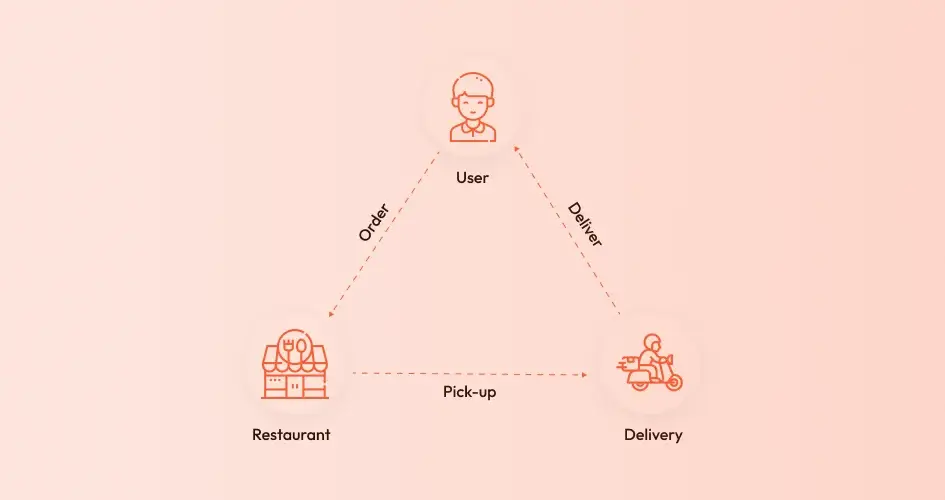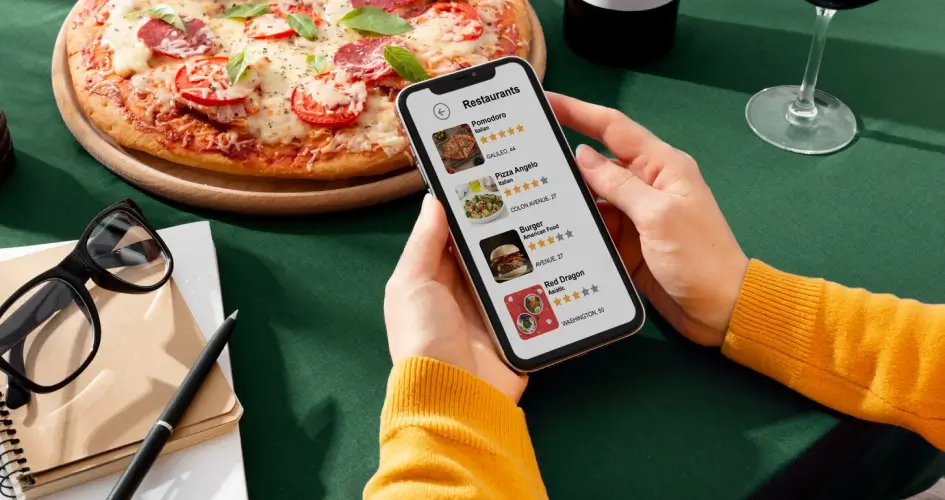Did you know that 66 million people downloaded Uber Eats last year, making it the most popular food delivery app globally?
Much of the change is attributed to the pandemic.
Of all the major online food delivery apps, the one that stands out is Uber Eats.
New sentence: One of the reasons for the increase in food delivery app demand is pandemic.
While there are plenty of online food delivery apps out there, Uber Eats is highly successful.
Are you looking to cater to the modern-day customer demands for food with an online delivery app?
It became even more popular due to the pandemic and promptly provided safety protocols to ensure hygienic food delivery.
Restaurant customers may now order their favorite dishes online and wait for a delivery person to send them to their doorstep.
Also, during the early lockdown stage, the number of people signing up for Uber Eats’ meal delivery service increased by 30%.
As a result, the number of restaurant contracts signed by Uber Eats jumped by 20% in April compared to the previous month.
According to many restaurant owners, even though Uber Eats is a popular service, it tends to bring down the profit margins of restaurants.
The overall number of Uber journeys for 2021 was 6.3 billion trips compared to 7 billion in 2019.
This means there is a gap and new players are eating up the market share of Uber Eats.
Therefore, this is your time to opt for food ordering app development and create an app like Uber Eats that drives profit.
If you are up for this, let us look at how the Uber Eats business model works.
Intelivita provides top-notch food ordering app development services to its clients.
If you’re looking for a reliable food delivery app development partner that understands your business needs as much as you, connect with us today!
The Working of an Uber Eats Business Model
You can implement your food delivery app ideas that will have three touch points involved in an Uber Eats model:
- Customers; who order food
- Restaurants; that processes the order
- Riders; who deliver the food to customers
Here, customers pay a nominal delivery cost and, on occasion, a cancellation fee to Uber Eats, which pays restaurants a percentage.
Drivers earn money by reliably and punctually delivering orders.
And restaurants will have revenue from providing food to customers.
- Often, restaurants market their brand and food on the app while Uber Eats brands the packaging.
- People look for restaurants near them and place their orders at those places.
- The delivery boy picks up the order from the restaurant and brings it to the customer’s door.
They make money from delivery fees, service fees, order fees, optional subscriptions from customers, and fees from restaurants for commissions and advertising.
Also, Uber Eats will provide order history, meal preferences, cooking instructions and other customer-specific information while also implementing Machine Learning (ML) to recommend certain cuisines and restaurants to customers.
Restaurant Managers use the Uber Eats platform that has access to data that they can use to improve the quality of their cuisine and how they prefer to get their orders delivered.
On the technology front, it leverages GPS and payment systems to track the rider while on the way to deliver food.
For the expenses, it has the following cost to incur—
- Platform maintenance
- Customer acquisition and restaurant onboarding
- Compliance requirements
- Credit card fees for research & development
- Customer support to address order-related grievances
Revenue Model of Uber Eats
The multisite platform, aggregator, and on-demand business models are all part of Uber Eats’ business plan that makes it unique.
Customers, delivery partners, and restaurant partners all use the app to order food and have them delivered to them.
Customers can also check menus for the restaurants online to order meals.
Delivery/Convenience Fee:
Customers using Uber Eats are charged a fixed delivery cost regardless of the amount of their purchase.
According to the market they are operating in, costs might range from $1 to $5 per delivery depending on peark hours and riders’ availability in the vicinity.
Revenue Share from Restaurant Partners:
Each order completed by one of Uber Eats’ Restaurant partners is subject to a cut ranging from 15% to 40%. Uber Eats sets the commission rate based on the market’s age and maturity.
Marketing & Advertising Fee from Restaurant Partners:
By giving consumer-facing brand campaigns, related social postings, and email marketing to Uber’s rider base, Uber Eats help its restaurant partners attract more customers and expand their client base.
Promotional deals:
By giving consumer-facing brand campaigns, related social postings, and email marketing to Uber’s rider base, Uber Eats is helping its restaurant partners attract more customers and expand their client base.
Surge Pricing:
Uber Eats employs a dynamic pricing algorithm to adjust prices during periods of strong demand.
Delivery partners’ availability and the number of orders submitted at once are considered while calculating this “surcharge”.
Features of Uber Eats App
You can create an app like Uber Eats by integrating some of the key advanced features that it offers.
But, it is not easy to identify features that offer your food delivery app an advantage over your competition.
But, as far as the Uber Eats application is concerned, here are some of the must-have Uber Eats features.
How to Create an App Like Uber Eats?
Ideally, you should be thinking of creating an online food delivery application that satisfies your target audience’s wants and desires in the face of fierce competition.
It is best to create an app like Uber Eats that is reliable, fast, and trustworthy.
In this regard, you may ask how to create a food delivery app?
Here, we’ve got you covered with all the key aspects needed to get started with a food delivery app like Uber Eats.
Conduct Market Research
The first step in creating an app like Uber Eats is extensive research on your competitors, target audience, and current food delivery trends.
If you want to better understand the current market conditions, the following questions may be helpful.
- Who are your competitors?
- What services do they offer to their customers?
- Who do you want to sell to?
- What should be the USP of your app? Think of all that your app will do that no other app does in the market.
- What features can you include should your app, like Uber Eats, have to make it stand out?
- What are the latest trends in the online food industry that your app can adopt?
You can use the answers to these questions to identify requirements and gauge the success of your app.
Got a project in mind? Get a free cost estimate & consultation today!
Features to Inculcate in Your Application
1. Easy Registration and Account Set-Up
Make it easy for people to order food.
For this, it is necessary to ensure a quick and effortless registration process for every user.
Here users can log into your app by connecting via email, social media account, and phone number.
The goal here is to onboard the user and create an account for them so that they can always return to your app an order fool.
2. Finding Popular Restaurants and Cafes
People will always look for nearby restaurants and cafes to order food from. Think of integrating a GPS feature that aids in locating the finest and nearest eateries.
Give users the search options to choose the place from where they can order food. Additionally, they may search for restaurants based on discounts and special offers.
Also, you can provide them with a comprehensive list of the restaurant’s pricing, menus, images, locations, and other information.
This feature helps them make a quick choice for the food and enables quick orders that, in turn, help you generate more orders.
3. Ordering and Tracking
As mentioned earlier, GPS technology is a must when looking to create an app like Uber Eats.
Add key features like order placement and order tracking that help customers keep an eye on their order as they wait for the food.
Similar to Uber Eats, you can provide notifications at various stages.
When the kitchen/restaurant accepts the order, you can notify users for—
- Order accepted
- Order preparation started
- Anticipated time for an order to complete
- Delivery person’s location and time it will take for them to reach
4. Scheduled orders
Customers can leverage this feature available in Uber Eats to set up the delivery timing of orders.
People have trouble finding time every day, so this option is more like a way to save time than when they want to have a meal right out of the meeting or a phone call.
Also, give them the ‘Repeat Order’ option to set up the order delivery over a week or on a particular date and time.
5. Payment integration
Offer users multiple safe, quick, and secure ways to pay online for their delivery.
Here, think of payment integration gateways like Stripe, PayPal, CC Avenue, etc.
6. Notifications
Ensure including the notifications feature for the customers to keep them updated.
Also, use this feature to buzz users during the offers, special promotions, and restaurant discounts.
7. Chatbot support
The best approach to take advantage of AI is via chatbots.
Let these automated bots answer customer service issues and recommend recipes based on previous orders and other criteria.
As chatbots get more intelligent, you can also have them send customized messages based on how people speak to each other.
8. Reviews and Ratings
People love to share their order experiences. Here, providing them with the space to write reviews and rate food can create trust and encourage other customers to order without hesitation.
Technology Stack
Now that you already know about the features of Uber Eats and how your app could line up for the new-age users, think of the technology stack.
First, when you think about ‘how to create an app like Uber Eats,’ consider using a public API that Uber has already made accessible.
Every technical connectivity conceivable must be considered when creating an Uber-like app.
Uber-Eats rely heavily on its geolocation technology, making it the most advanced software due to its first-mover advantage.
But, your food delivery app also needs to consider the Integration with payment gateways and route management.
Here’s the summary of all the technical aspects of creating an Uber-like app in this part.
Once you reach the planning process for the Uber Eats like app, you need to define a range of technologies and programming languages.
Also, you need to know-how to work together.
For instance, you can use Swift and Kotlin to make apps for both iOS and Android.
The app’s backend could be written in Python, Java, PHP, Ruby on Rails, Node.js, or another language.
Check with our experts and we will help you get started.
Creating Backend for Uber Eats Clone App
Technologies
For Front-End: Use simple React
For Back-End: Node JS for API and service development while employing multiple different SQL but no SQL Databases
Interface: Using REST or GraphQL for interface between APIs and UI
Working model
Here, you can create different types of services that a UI layer uses since you are implementing them in a Microservices manner.
It is a basic gateway-based microservice architecture where the UI layer communicates with a centralized gateway for any form of request, and the API gateway forwards this request to the appropriate set of services.
Here, you have the option of choosing between REST-based and graphql-based services in this scenario.
Here, you can choose between REST-based and graphql-based services in this scenario.
The flow will have a simple auth service constructed for Gateway to microservice in Node JS.
This will be used for authentication and authorization, while the API gateway would also work as a simple gateway in Node JS.
Other aspects to consider
- Data synchronization and interoperability.
- The message bus platform (SQS, SNS, KAFKA, RABBIT MQ) may be used to prevent any real-time failures.
- Service A should know as little as possible about service B thanks to decoupled services.
- Implement real-time GPS-based delivery person assignment tools.
- Streamline the client experience by providing real-time tracking (good to have).
API’s To Create A Food Delivery App Like Uber Eats
As discussed above with the Uber Eats mode, your app will have a customer app, delivery person guys, an admin panel for kitchen/restaurant, and a website.
You need to ensure a seamless synchronization is needed so that information can move quickly from one place to another.
A client-server architecture can organize the work of these kinds of projects, and an API is made so that data can be shared.
API is necessary to exchange data with the restaurants’ websites and accounting programmes to update menus and prices.
If a kitchen refuses to enable automation, it is responsible for keeping prices up to date.
The success of your project largely depends on how the information exchange between applications, programmes, and the server takes place in an efficient manner.
It is to leverage both the back-end and front-end development of the project to one developer.
As shown in the figure, there is a thoughtful arrangement of the data exchange (for database) between the apps, programs, and the server.
Also, you need to ensure robust server development for effective database management through admin panels (back-end) and user parts (front-end).
It is also possible to improve load speed by applying cache and queue services.
This creates a complicated data storage architecture, set up the server to fulfil essential activities, and conduct load testing and other similar tests.
You can avoid multiple issues throughout the setup process if you have a single team working on the same project.
Also, this helps identify faults connected to the human-end (lack of interaction between the developers).
There are several advantages to using a third-party provider to handle your Uber Eats API connections.
One of them is reducing the amount of work it demands coupled with improved efficiency.
Uber Eats API is a good place to start if you own a restaurant and want to branch out into an on-demand delivery model.
Menus and orders are managed on the Uber Eats API Platform by using the app.
The drawback of adopting this Uber Eats API is a revenue-sharing policy with suppliers which can go up to 45% for each order.
However, it is ideal since Uber Eats has a far larger customer base than any other competing APIs.
Frequently Asked Questions
Q1: Are there any Special Features to add to Creating an Uber Eats like App?
You’d want your customers to keep returning to your food delivery service.
You can implement features like rewards/discounts, cashback, and loyalty rewards.
This keeps consumers engaged and increases brand recognition when tapping into the new market.
Q2: Who can be the Potential Customers of Apps like Uber Eats?
When creating a food delivery app like Uber Eats aiming at more growth and ROI, it is best to understand the target audience.
Begin gathering the necessary information about the potential audience, including their demographics, location, and interests.
For your food delivery business, you target these age groups – young adults looking for a taste of home, busy families, and working professionals to gain more traction.
Q3: What is the Cost of Uber Eats like App Development?
There is no direct way to come to a final cost for creating a food delivery app like Uber Eats since it depends on many aspects.
This includes features you choose, the type of platform you use, its functionalities, country of app development and other factors.
For example, if you hire an On-demand App Development company in the USA, you might get a relatively high-end solution, but the quality will be unmatched.
Similarly, developers in Asia and Eastern Europe would charge much less.
However, if we are to get to a ballpark, the estimated cost of developing a simple, highly-functional on-demand app ranges from $10,000 to $100,000.
Q4: Is it a Good Idea to Opt for Uber Eats Clone Script?
It’s very enticing to go for clone scripts for faster and cost-efficient development without compromising the quality.
Also, it can be your go-to solution that helps:
- Faster launch for your business
- Lesser investment
- Significantly low requirement for experts
But, the catch is that you need to go with a trusted mobile app development company with a team of experienced developers with hands-on expertise for white label solutions.
Conclusion
There are all the reasons why your food delivery business needs a delivery app like Uber Eats.
However, the rapidly increasing demand for food delivery apps worldwide opens up the opportunity for startups offering unique features.
Start hiring a mobile app development company if you are all set to grab abundant opportunities.
They will customize the app solution that caters to unique needs.
Start building a food delivery app as Uber Eats with the business plan, revenue model, features, and tech stack mentioned in the post above.
Ensure that you work with professional app developers who have experience working with Android and iOS applications and have a team of project managers, testers, etc.
If you wish to get a quote for food delivery app development, you can contact our experts at Intelivita to get started.











